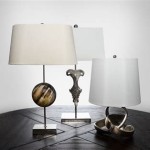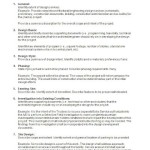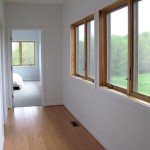Best Interior Antennas for Improved Signal Reception
In today's digitally connected world, reliable internet access is essential. While external antennas offer superior signal strength, they aren't always feasible or aesthetically pleasing. Interior antennas provide a convenient and unobtrusive alternative, making it possible to enhance signal reception without compromising on aesthetics. This article explores the best interior antennas, highlighting their features, benefits, and considerations to help you choose the optimal solution for your needs.
Understanding Interior Antennas
Interior antennas are designed to amplify and receive wireless signals within a specific area. Unlike external antennas, they are compact and portable, allowing for easy placement indoors. These antennas typically utilize a combination of advanced technologies, such as directional amplification, signal filtering, and frequency tuning, to optimize signal reception and minimize interference. They can connect to a variety of devices, including routers, modems, and televisions, enhancing signal quality and expanding coverage.
Types of Interior Antennas
Interior antennas come in several forms, each with specific advantages and disadvantages. The most common types include:
- Omni-directional Antennas: These antennas receive signals from all directions, making them suitable for general use. They offer wide coverage but may not achieve the strongest signal in a specific direction.
- Directional Antennas: Designed to amplify signals from a particular direction, these antennas are ideal for locations with strong signal sources. They offer superior signal strength but have limited coverage.
- Panel Antennas: These antennas feature a flat panel design, providing a balance between omni-directional and directional capabilities. They offer good coverage and signal strength while maintaining a compact profile.
- Yagi Antennas: Known for their high gain and directional capabilities, Yagi antennas are typically used for long-range television reception but can be adapted for internet signal enhancement.
Key Considerations for Choosing the Best Interior Antenna
Selecting the best interior antenna requires careful consideration of several factors:
1. Signal Strength and Location
The strength of the signal in your location will significantly influence your antenna choice. If your signal is weak, a high-gain, directional antenna might be necessary. Alternatively, if your signal is generally strong, an omni-directional antenna could suffice.
2. Coverage Area
The size of the area you wish to cover with enhanced signal will also play a role. Larger rooms or multi-level homes may require an antenna with a wider coverage pattern. Omni-directional and panel antennas are well-suited for broader coverage, while directional antennas excel in small areas.
3. Frequency Band
Internet signals operate on specific frequency bands, such as 2.4 GHz and 5 GHz. Ensure the antenna you choose supports the frequency band used by your internet service provider. Check the antenna specifications to confirm compatibility.
4. Connectivity and Compatibility
Consider the connection type and compatibility of the antenna with your existing equipment. Most interior antennas come with USB or coaxial connectors, allowing them to connect to routers, modems, or TV tuners. Check for compatibility with your devices before making a purchase.
5. Aesthetics and Placement
Interior antennas should blend seamlessly with your existing décor. Choose an antenna with a design and color that complements your surroundings. Consider its placement and ensure it does not obstruct views or cause clutter.
Additional Tips for Improving Signal Reception
Even with the best interior antenna, certain factors can hinder signal strength. Employing these tips can further enhance your signal reception:
- Place the antenna strategically: Locate the antenna near a window or in an area with minimal obstructions to optimize signal reception.
- Minimize interference: Keep the antenna away from electronic devices and other sources of interference, such as microwaves or cordless phones.
- Utilize a signal booster: If your signal remains weak, consider using a signal booster in conjunction with your interior antenna.
Ultimately, the best interior antenna is one that meets your specific needs and enhances your signal reception, providing reliable and efficient internet access within your home or office.

The 3 Best Indoor Hdtv Antennas Of 2024 Reviews By Wirecutter

The 3 Best Indoor Hdtv Antennas Of 2024 Reviews By Wirecutter

Best Indoor Tv Antennas 2024 Reviews Of Top Digital Antenna On

4 Best Indoor Tv Antennas Of 2024 Reviewed

Best Tv Antenna For 2024 Cnet

The Best Digital Tv Antennas For 2024 Pcmag

The Best Digital Tv Antennas For 2024 Pcmag

How To Set Up Your Indoor Tv Antenna For The Best Reception Reviews By Wirecutter

Best Tv Antennas Of 2024 Indoor Outdoor Models Tested Techhive

The Best Indoor Tv Antenna For Hd And 4k Techlicious








